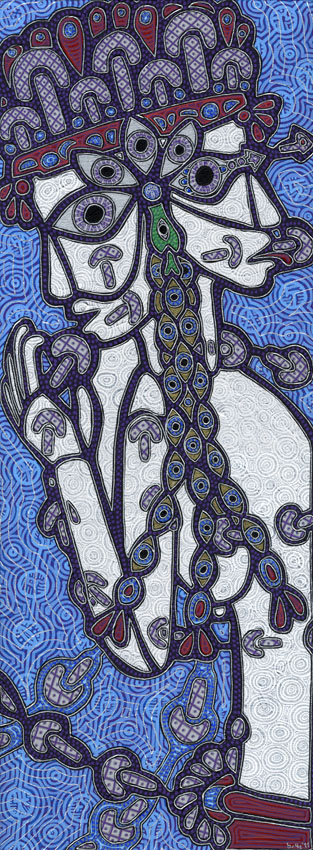:: 2011 :: 30cm x 82cm :: Acrylics, Inks & Markers on Canvas ::
In 2008 I wrote an essay on the Minoan conception of the labyrinth in which, among other things, I posited that the labyrinth was associated in part with the ritual use of a psychedelic mushroom (stropharia cubensis). I have since revised this view. Archaeological researches have in fact revealed evidence of mushroom use in Bronze Age Crete, but curiously the mushroom-shaped artefacts are only associated with a few particular sites - especially Agia Photia in the east of Crete.
These few sites are thought to be Cycladic colony towns and cemeteries on Minoan Crete and it appears that wherever Cycladic folk settled on Crete they brought their mushroom cult. I have found no evidence of any ritual mushroom usage from sites on Crete that were purely Minoan, or where Cycladic peoples were absent.
This is interesting: the Cycladic islands are small and verdant enough to support a small-scale mushroom cult, but an island as dry and as large (and as urbanised) as Crete probably couldn't support a large, centralised urban mushroom cult such as the labyrinth hypothesis that I theorise might imply.
Hence, Mykeon, in which we see a Cycladic mushroom deity imbibing the stropharia spp. It would be interesting to know whether the Bronze Age archeaeology of Cycladic islands such as Keos, where there were important ritual centres, supports this view that Cycladic peoples brought a mushroom cult to Minoan Crete, but that it didn't transmit to the Minoans themselves, although the possibility remains that small-scale use persisted in villages outside of the urban centres on Crete.











